Species at risk in a warming world
Today, global warming poses one of the greatest risks to animals and ecosystems around the world. From Antarctica to Africa, melting ice caps, drought, heat waves and unpredictable weather patterns lead to food shortages and habitat loss.
Check out the slides below to learn more about some of our planet’s most unique and amazing animals—and how global warming puts them at risk.
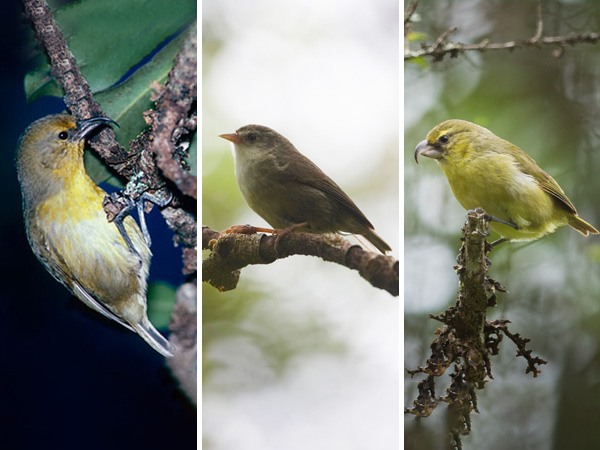
Hawaii’s native forest birds are under immediate threat from climate change. Invasive mosquitoes that carry avian malaria are spreading upslope on the main mountainous volcanic islands as Earth’s temperature warms. This disease is fatal to birds, and threatens to drive species like the ‘akiapōlā’au, ‘akikiki, and Maui parrotbill - pictured here left to right - and more to extinction. Fortunately, a biological control using a bacteria commonly found among insects reduces mosquito breeding success and can be used to suppress mosquito populations – allowing the birds to recover. The race is currently on to complete permitting and to finance this innovative mosquito control program.
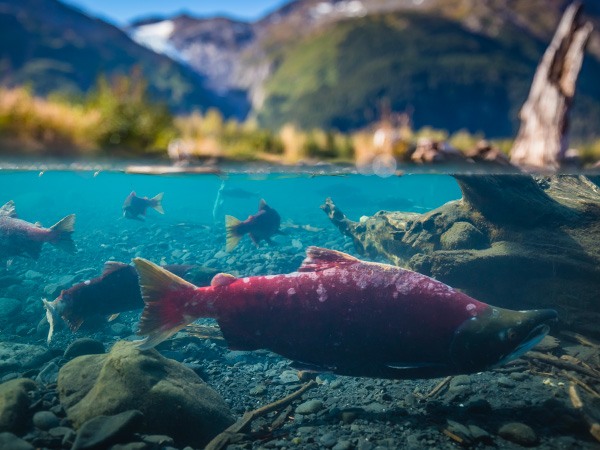
West Coast salmon are vulnerable to climate threats like hotter oceans and rivers, extreme high and low flows, and ocean acidification. According to NOAA, more than half of all populations in the contiguous U.S. are listed as threatened or endangered, and sockeye salmon - pictured above - of the Snake River Basin are one of four populations most at risk. Their 1,500-kilometer freshwater migration is the longest of any sockeye, and runs through several “freshets” - ephemeral streams that depend on sufficient mountain snowpack to form when it melts in the spring. The population is currently totally dependent on a conservation breeding program for its continued survival.
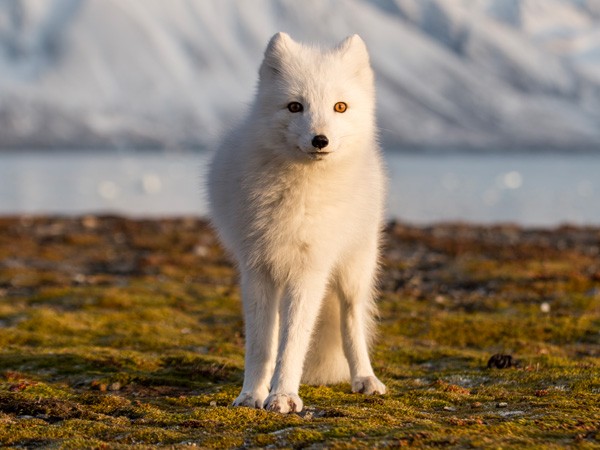
Arctic fox populations can be found on nearly every Arctic landmass, from North America, Greenland, and Eurasia to scattered Arctic islands. The species is listed on the International Union for Conservation of Nature (IUCN) Red List of Endangered Species, and populations in Norway, Finland and Sweden are considered “Critically Endangered,” thanks to loss of tundra habitat, increased competition with red fox populations whose habitat increasingly overlaps with theirs, and reduced availability of key food sources like lemmings and voles, ringed seal pups and remains scavenged from polar bear kills - all of which can be attributed to climate change.
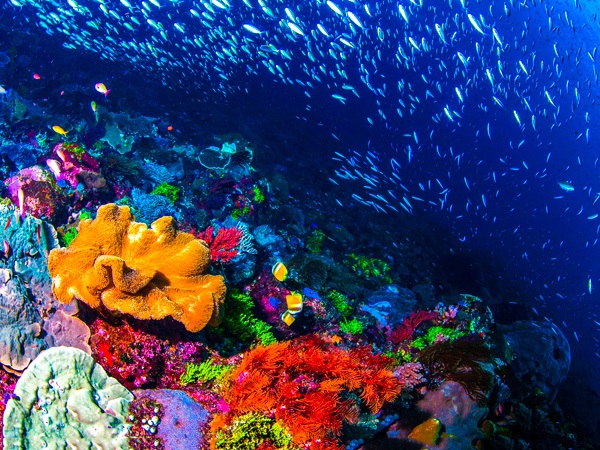
Coral reefs are experiencing some of the most dramatic climate-related damage. The Earth’s oceans act as a massive carbon dioxide sink - a phenomenon that has slowed global warming at the cost of significant changes to ocean chemistry. According to NOAA, warming waters cause stress to their symbiotic algae, leading to bleaching and infection. Global sea level rise may lead to increases in sedimentation runoff, smothering some reefs, while stronger and more destructive storms wreak greater destruction on others. Changes to ocean currents reduce the availability of food and the dispersal of coral larvae. And all that dissolved carbon dioxide acidifies the oceans, hampering coral growth and weakening their reef structure.
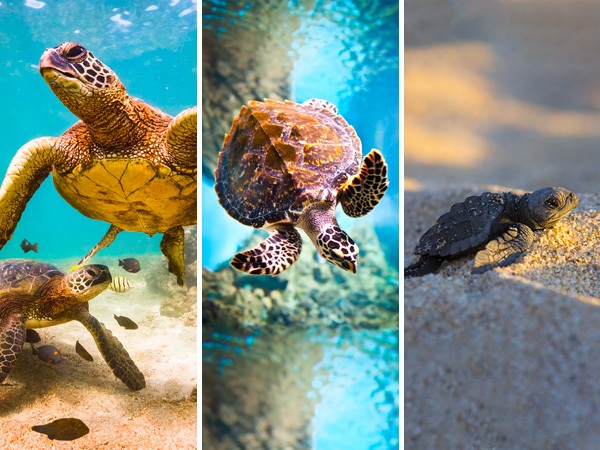
Sea turtles - including the endangered green, hawksbill, and leatherback sea turtles pictured above - face myriad threats to their survival. Climate change is fueling more frequent and more destructive hurricanes and tropical cyclones, as well as sea level rise, which can erode or flood the beaches where sea turtles lay their eggs. As oceans absorb atmospheric CO2, they become acidified, leading to bleaching and die-off of coral reefs - an important sea turtle food source. And on land, warmer nesting beaches have been found to increase the proportion of female to male hatchlings. Recent research suggests that even a 1° C temperature increase could have a devastating impact.
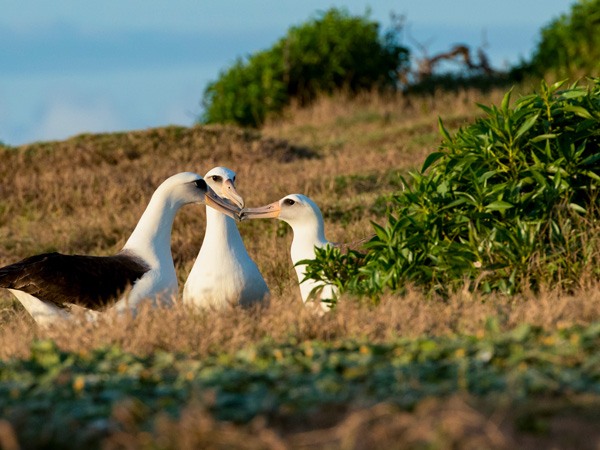
Albatross - like the Laysan albatross pictured here - face a particularly unique threat to their survival: Once lauded by Time magazine as “the most committed lovers of any bird,” these birds are famously monogamous. A 2021 study out of ISPA (Instituto Universitário in Lisbon, Portugal) found that climate-related food scarcity is disrupting breeding patterns and causing “divorce” rates to surge by up to 700%. Mom and Dad share the work of feeding their chicks for the first four months of their lives. Because pairs with previous experience rearing chicks together were observed to have greater reproductive success, scientists worry that rising divorce rates could negatively impact chick survival.
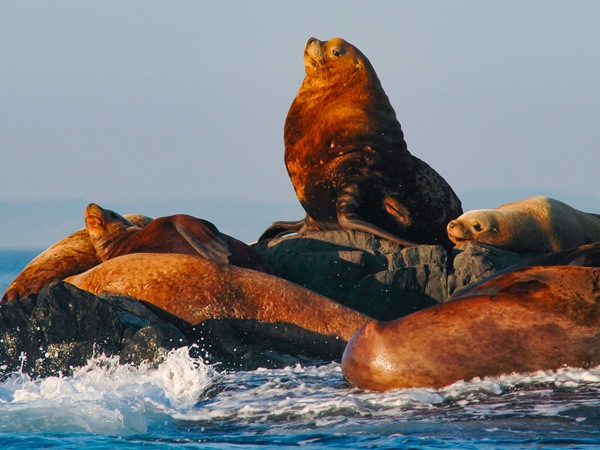
Steller (or northern) sea lions are native to the coastal North Pacific Ocean, where they’ve long been a key subsistence resource for Alaska Natives. While the eastern population is currently not considered at risk, the western population is listed as endangered. Chief among the threats they face: sea level rise that threatens to swallow rookeries (sea lion nesting sites), marine heatwaves and ocean acidification that make food increasingly scarce, and harmful algal blooms that cause sickness and even death. Each of these threats is linked to climate change, and expected to worsen if we don’t reduce our climate pollution.
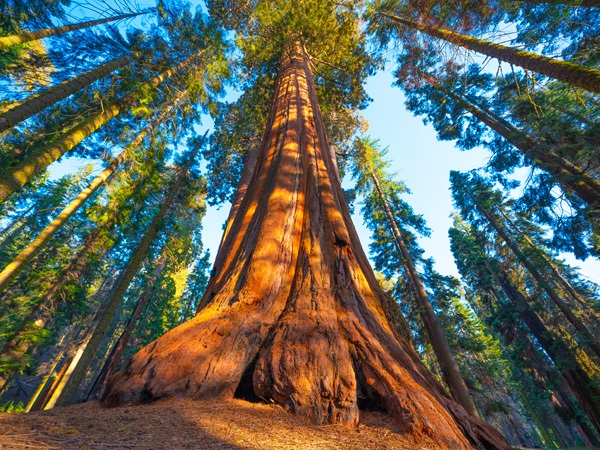
Giant sequoia are found in a narrow range in the Sierra Nevada, where some individuals are estimated to be thousands of years old. The U.S. National Park Service notes warm temperatures between 10,000 and 6,000 years ago appear to have reduced suitable habitat enough to make sequoias a rare species. Sadly, hotter droughts - with unusually high temperatures resulting in greater water loss and lower water availability - now threaten a return to scarcity for these majestic giants.
EDF Eco Partners protect wildlife all year long
![[alt text]](/sites/default/files/images/ss/world-wildlife-day/polar1_300x300.jpg)
The best way to fight climate change is by becoming an EDF Eco Partner. Eco Partners make automatic monthly contributions of $5 or more. Start a monthly gift today, and your first 12 gifts will be matched $1-for-$1 by the Wilson Charitable Trust, doubling your power to protect wildlife for a full year.










